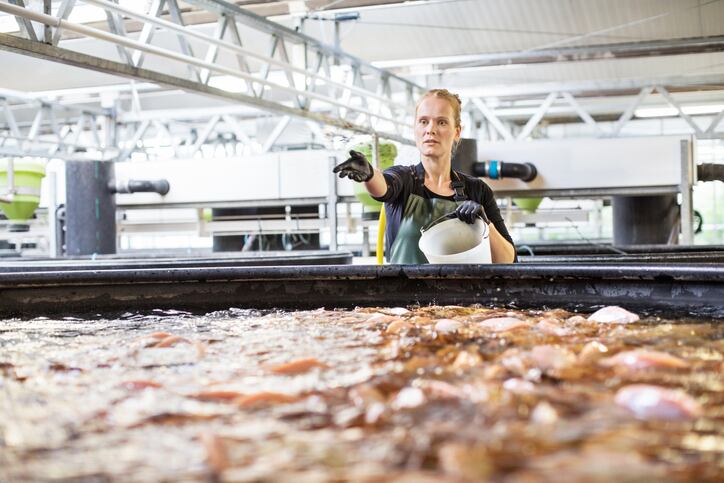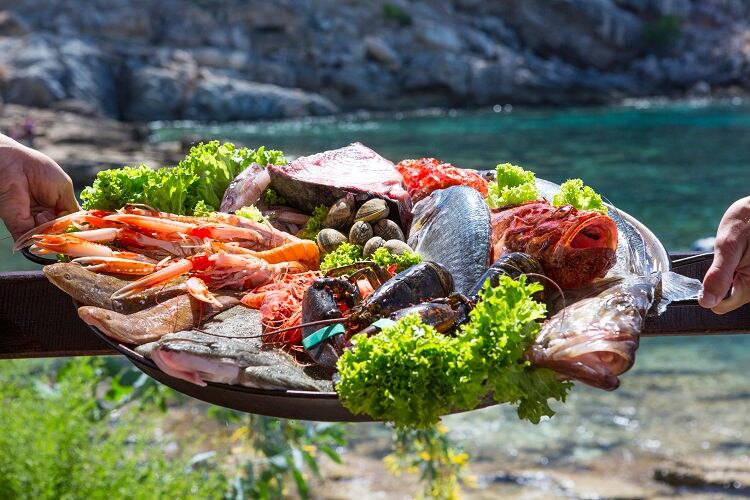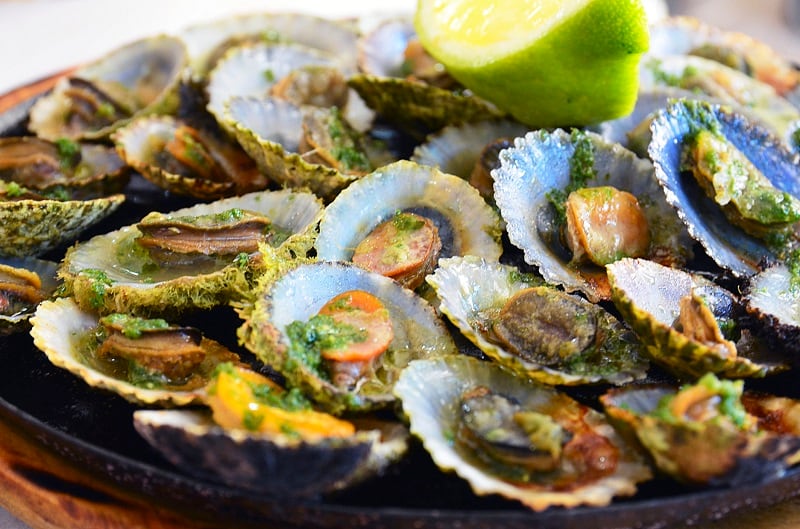Aquaculture often reels in criticism for its negative social and environmental impacts. It’s been estimated 46% of people think negatively about farmed fish.
One concerning side-effect of fish farming, for example, is eutrophication – where water is enriched in dissolved nutrients that stimulate the growth of aquatic plant life, resulting in the depletion of dissolved oxygen. Another is marine animal waste from aquaculture facilities that make their way into the ecosystem, affecting other fish and resulting in nutrient pollution.
Detractors claim the salmon farming industry, for instance, is further linked to a host of environmental problems. These include algal blooms, a phenomenon that reduces oxygen in the water and causes the fish to suffocate, and sea lice infestations which can harm the salmon in the farms and have a devastatingly lethal impact on wild salmon and sea trout if they disperse from open-net salmon farms.
But supporters contend responsible fish farming offers a realistic solution to meet growing global demand for affordable protein containing a high concentration of bioavailable micronutrients in an eco-efficient way.
Farmed salmon, for example, boasts the lowest carbon footprint and freshwater consumption compared to the farming of chicken, pork and beef, according to the World Resources Institute. France’s first land-based shrimp farm claims to use 20% less feed and waste significantly less water compared to conventional shrimp farming.
Certification bodies like the ASC insist that certified salmon farms can minimise impacts on local ecosystems via, for example, carrying out impact assessments to protect birds, marine mammals and sensitive habitats, ensuring they are not sighted in High Conservation Value Areas, and minimising fish escapes to an absolute minimum.
ASC currently uses separate standards for different species groups. It now plans to launch a universal ASC Farm Standard. Accredited producers will have to meet criteria in three areas: business management, environmental sustainability, and social responsibility. The ASC said: “Farmers and auditors will benefit from greater efficiencies, while other stakeholders including NGOs will find it easier to assess and compare the ASC’s requirements, making public consultation more efficient.”
ASC is currently holding one of its largest ever public consultations to seek feedback on the plans. This round of consultation includes proposals for requiring all certified farms to report energy use and greenhouse gas emissions, a proposal aimed at combatting sea lice, and the introduction of risk management plans for key topics like health and safety.
‘The industry should be put in a more positive light’
The streamlined scheme aims to address the negative impacts of aquaculture, ASC Director of Standards and Science Michiel Fransen told the Transforming Aquaculture’s Future Together event. "The industry should be put in a more positive light,” he said. “The moment you speak to consumers or NGOs about aquaculture it's always put about the concerns people have with the industry.” Discussion is “hardly ever focussed about the benefits it could bring to the global population for providing jobs and food. ASC addresses those issues in a number of means.”
The ASC is looking, for example, to contribute more actively in investment in mangrove protection areas. "Restoration is something that the aquaculture industry has an important role that we can fulfil, but not always have taken up that opportunity so far. There's an opportunity to really reverse that narrative of shrimp aquaculture farming being a primary driver of mangrove deforestation globally in the past."
Investors ‘now highly driven by an ESG agenda’
Against this background, green financing is tended to see aquaculture’s budding benefits, said Tanja Hoel, Director of Hatch Innovation Services, an accelerator programme for sustainable aquaculture start-ups. "I think there's a momentum now for aquaculture, driven by the green financing landscape,” she said. “We definitely see there's an opportunity for aquaculture now given the interest that we see in the financing community when it comes to supporting more responsible, sustainable investments. Investors are highly driven by an ESG agenda: this is the window of opportunity for the aquaculture industry.”
But improvements in social and environmental impact are ‘increasingly critical' as the aquaculture sector grows and production intensifies, added Dane Klinger, Director of Aquaculture, Conservation International, an NGO.
“There's been a lot of improvement in terms of environmental performance and social performance of the aquaculture sector over the last 20 years but there's still a lot of progress to be made.”
He called for greater adaption of best practices in areas such as water quality and disease and feed use, adding there was a need improved governance systems and proper citing in areas such as carrying capacity analyses and spatial planning to ensure the environmental sustainability of the aquaculture industry.
Smallholder farmers are the next frontier for certifiers
But in many cases these best practices are not being utilised by small and medium sized farmers around the world who make up a majority of aquaculture production, he complained.
Cost is without doubt a barrier for the smaller farmers and it's a challenge for certifiers to reach out to these producers. So much so, that “the danger is that the smallholder farmer may be out of business before we do find ways to adequately include them in certification,” feared David Little, Chair of Aquatic Resources Development, University of Stirling.
Certification is however a gateway to new markets for the small- and medium-sized farmer. Getting these players onboard should therefore be a higher priority among the major certifiers. “There’s a lot of peoples livelihoods and nutrition at risk if we don't try and bring them into a more level playing field,” he warned.
"There's no free lunch when it comes to food production,” added Klinger. “All food production has some environmental cost associated with it. There are many types of aquaculture that all of the evidence shows us have relatively small environmental footprints. So, you can get delicious, nutritious food for a relatively environmental price. Certification schemes like the ASC are important tools for signalling to customers what those types of aquaculture are. But I think the next challenge is to think about how we can take the success of the ASC to smallholder farmers who right now might not be applicable for the certification schemes as they are currently envisioned.
“That’s the next critical frontier: incentivising and verifying an assurance system within small and medium-size producers for lots of different types of markets."




